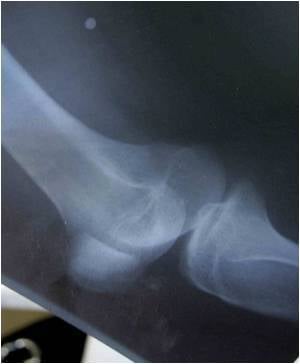Extra-coding RNA partially overlaps with a gene sequence that produces messenger RNA; but it also includes RNA sequences from DNA beyond the gene boundary.

‘Extra-coding RNA, or ecRNAs are one of the first potential mechanisms for activity- and experience-dependent alterations of DNA methylation status at specific genes in brain neurons.’





To demonstrate the critical role for ecRNA-directed methylation, first author Katherine Savell, a graduate student in the Day lab, blocked one specific ecRNA for the Fos gene locus in the hippocampus of the rat brain. Decrease in this specific ecRNA prevented formation of a long-lasting fear memory, where rats learn to associate mild electrical shocks with a particular place. This highlights a potential role for ecRNAs in cognitive function of the brain. As the name suggests, ecRNA partially overlaps with a gene sequence that produces messenger RNA; but it also includes RNA sequences from DNA beyond the gene boundary. Each ecRNA is specific to the gene it overlaps. Experiments by the UAB researchers included both a broad, genomewide look at ecRNAs and gene expression, and a detailed example using the Fos gene locus.
Genomewide experiments The researchers performed genomewide classification of neuronal ecRNAs and showed ecRNA species are generated from genes that are vital for nerve cell responses to stimulation. Treating neurons with drugs that increase or decrease neuronal activity modified ecRNA production.
This novel genomewide evidence showed that, in the absence of ecRNA production, genes tended to have methylated promoters and were silent, meaning they did not produce messenger RNA. On the other hand, genes that generated ecRNAs had demethylated promoters and actively produced messenger RNA.
The researchers showed these relationships between ecRNA production and gene activity in neurons included genes whose expression is altered by neuronal activity and genes implicated in developmental and neurodegenerative disorders. Thus, ecRNAs are one of the first potential mechanisms for activity- and experience-dependent alterations of DNA methylation status at specific genes in brain neurons.
Advertisement
The researchers also provided a detailed analysis of ecRNAs arising from the Fos gene locus. They found that the Fos ecRNAs bound tightly to DNA methyltransferases. DNA methylation states at Fos were altered after an increase in ecRNA. Fos ecRNAs had a distinct synthesis and regulation as compared with Fos messenger RNA, and knockdown of Fos ecRNA increased DNA methylation and repressed Fos messenger RNA. Fos ecRNA was induced by memory-forming experiences in rats, and knockdown of Fos ecRNA in a region of the rat hippocampus significantly impaired long-term memory formation after contextual fear conditioning.
Advertisement
Day and colleagues propose a model where ecRNAs directly interact with the catalytic domain of DNA methyltransferases to block the ability of the methyltransferases to target and silence the overlapping gene for each specific ecRNA.
The model requires the ecRNA to stay near or at the gene after synthesis in order to regulate the methyltransferases just at that gene location. One possibility, the researchers say, is that the ecRNAs have a very short half-life, so they would disappear before moving very far from a specific gene. A second, more intriguing possibility is that the ecRNAs form a triplex structure with DNA that stabilizes and anchors the ecRNA at the gene location.
The researchers also note that many neuropsychiatric and neurological diseases are associated with chronic alterations of specific gene products in neurons. Targeting ecRNAs in the brain could be an attractive therapeutic approach to reorganizing epigenetic landscapes at specific genes, thus alleviating longstanding pathologies associated with dysfunctional methylation patterns.
Besides Day, authors of the Nature Communications paper, "Extra-coding RNAs regulate neuronal DNA methylation dynamics," are Katherine E. Savell, Nancy V.N. Gallus, Rhiana Simon, Jordan Brown, Jasmin S. Revanna, Mary Katherine Osborn, Esther Y. Song, John J. O'Malley, Christian T. Stackhouse and J. David Sweatt, all of the UAB Department of Neurobiology and the Evelyn F. McKnight Brain Institute; and Allison Norvil and Humaira Gowher, Purdue University Department of Biochemistry. Day is an assistant professor in the UAB Department of Neurobiology and the Evelyn F. McKnight Brain Institute.
Source-Eurekalert















